Even though U.S. motorists haven’t been all that charged up by the nascent battery-car market, there’s a flood of new products heading for showrooms in the coming month. But while most makers are struggling to drive down prices, betting that the cheaper the product the bigger the demand, a handful of manufacturers are targeting the other end of the spectrum.
Among the brands betting that even affluent buyers want to go green are Porsche, BMW, Mercedes-Benz and, of course, Tesla which has been beating even its own optimistic forecasts with the Model S electric vehicle. A few months from now, Cadillac will join the upscale list with the launch of its new ELR plug-in hybrid.
Think of it as a mix of something old and something new. The 2015 Cadillac ELR features the latest take on the maker’s distinctive Art & Science design language – as well as the most elegant and high-tech interior Caddy has ever offered. Under that sexy skin, however, is an updated version of the Voltec plug-in hybrid system already in use in the more mainstream Chevrolet Volt – albeit with some welcome improvements.
We got our first chance to test the new ELR during a miserably rainy day in the Detroit suburbs after spending the morning with the lead designer and engineer on the ELR project.
If you get a sense of déjà vu looking at the Cadillac ELR that’s no surprise, suggests Chris Thomason, who handled the technical side of the project which, he notes, “was all about bringing the Converj to life,” a reference to the wildly popular 2009 concept car. The directive Thomason got was to “recreate the show car – which was a blessing and a curse.”
The challenge, he and other key team members explained, was to stay within the “envelope” of the show car – maintaining not only its basic dimensions but key design elements – while somehow maximizing aerodynamics, delivering good performance and road comfort and squeezing the Voltect plug-in drivetrain under its skin.
(What hampers EV sales more: price or range anxiety? Click Here to find out.)
Check both the concept and the production car out and you’re likely to be stunned at how close the team came to duplicating the Converj while delivering a serious production car. “It’s a very honest interpretation,” proclaimed Bob Boniface, lead exterior designer.
The tweaks are minor: the headlamps are a bit more conventional in appearance – though Cadillac is using full LED lighting to reduce energy demands – and there are conventional mirrors now, rather than the camera-based system that wouldn’t have met federal guidelines. To underscore how difficult it was to bring things together, the design and engineering team came up with 26 different sideview mirror iterations – during just one day’s work in the GM wind tunnel – aiming to minimize wind drag and to reduce wind noise.
One of the big challenges with a battery-based vehicle is that in electric mode there’s no revving engine to mask what is often called “the stumps in the swamp,” the lesser noises you’d normally not notice. So, suddenly, engineers have to deal with annoying motor whines and pump hums, tire noises and wind whistles.
Of course, the biggest challenge was making sure the Voltec platform not only fit inside the new Cadillac ELR but also delivered the level of performance that luxury buyers might expect. As with the Chevrolet Volt, the system brings together a 1.4-liter “range-extender” gasoline engine and a single electric motor. With a fully-charged battery, the vehicle normally starts off in electric mode, though under hard acceleration, the inline-four kicks in to give the ELR a boost.
Heavier than the Volt, the ELR also needed to deliver better acceleration – about a second or so faster than Volt, with an estimated 0 to 60 time of around 9 seconds in sport mode. That required amping up the electric motor, the overall package now delivering 207 horsepower and 295 pound-feet of torque – an increase of 58 hp and 22 lb-ft.
At the same time, GM wanted to maintain the fuel economy and range numbers of the Volt, no easy task when you are drawing more power to get the ELR moving. In a sense, Thomason acknowledged, the Cadillac plug-in actually benefited from GM’s overly cautious approach with the Volt.
Lithium-ion batteries tend to not like to be completely drained – nor topped off to 100% of their capacity – which can shorten their life. As one of the first LIon-powered models, Chevy decided to use less than two-thirds of the 16.4 kilowatt-hour pack. But experience has let it feel comfortable in stretching that by a figure the maker won’t reveal. The key is that despite having more power, the Cadillac ELR’s range is still a match for Volt, 37 miles per charge. It is expected to get a rating of around 90 miles per gallon-equivalent, or 90 MPGe, and a total range, battery and gas, of around 345 miles.
Of course, those are all just numbers. The real question is what it felt like to drive the 2015 Cadillac ELR. The good news is that with the added power, the ELR just feels more like a normal luxury car with particularly peppy launch feel that benefits from the fact that electric motors deliver maximum tire-spinning torque the moment they start turning.
(Honda Accord named Green Car of the Year. Click Herefor more.)
You’ll get the best performance from the combined electric and gas propulsion system, so the feeling of the drivetrain does change – as with Volt – when the lithium pack is drawn down. And, if there’s any real weakness to the system it’s the 1.4-liter gas engine which isn’t quite up to luxury standards in terms of noise and vibration. You’ll clearly hear some whine when it kicks in, though Cadillac has done a better job masking the unpleasant behaviors with ELR than Chevy did with Volt.
The ELR features four separate operating modes, including tour, sport, mountain and a hold mode. The latter is a logical addition missing from Volt. It’s best to use battery power in city, rather than highway driving conditions. At higher speeds, range drops faster than expected. Around town you can boost battery range if you’re recharging a lot in stop-and-go conditions. Plus, Cadillac is planning for the future – especially for sales overseas. In London, for example, you get an exemption from the city’s costly commuter tax if you’re running on battery power and some cities are even considering banning all but zero-emissions vehicles. So, saving your batteries for in-town driving could be a big plus.
The 2015 Cadillac ELR also offers a new Regen on Demand feature that lets you increase the amount of energy captured during coasting or braking that’s pumped back into the battery pack. You use the paddle shifters behind the steering wheel that would normally operate a conventional vehicle’s transmission. Hold them down and you’ll feel like you’re downshifting and using engine torque to brake more quickly.
The downside is that you have to hold the paddles down, unlike when you’re downshifting a conventional gas engine. We’d like to see Caddy change this so that once you tap the paddles it stays in this high regen mode – whether for a set period of time or, perhaps, until you press down on the throttle again.
Another change between the Cadillac ELR and Chevrolet Volt is the switch to 20-inch aero-style alloy wheels. The Chevy uses 17s. And Caddy buyers will appreciate the ELRs continuously variable suspension which can adjust anywhere from full to minimal damping in as little as two milliseconds.
But what buyers may just wind up liking the most is the Cadillac interior. The maker has come up with a strikingly elegant design that is even more refined than that of the all-new 2014 CTS sedan. One of the more distinctive elements is the asymmetric layout – anchored by a second brow at the top of the instrument panel — that gives the cabin a more sporty feel. We were particularly enamored of the highline option package with seats that were seemingly infinitely adjustable.
The gauge cluster uses, as you might suspect, a fully reconfigurable display. One of the smart moves was allowing a driver to choose just how much information the cluster displays. Geeks will appreciate all the fine minutia, such as state of charge and energy consumption. Others will prefer having only the most essential data on display.
A second touchscreen atop the center console handles infotainment duties and features the latest version of the Cadillac CUE user interface – which has undergone some welcome improvements since debuting on the XLR sedan more than a year ago.
(Click Here for a first look at the new VW Twin-Up plug-in.)
At a starting price of $76,000, the 2015 Cadillac ELR will come in at nearly twice that of the Chevrolet Volt – and fully equipped with that upscale interior and a few other available options, it can climb up to $83,000.
Unlike some new battery-based vehicles, the new ELR will be offered around the country, and more than half of Cadillac’s current dealer base are now approved to sell and service the plug-in hybrid.
That said, Caddy planners don’t expect a lot of volume. Is it worth the price? For the vast majority of luxury buyers, the answer will likely be no. They’ll stick with the top-line XLR and CTS models. But as the strong demand for the new Tesla Model S suggests, there’s a small but dedicated core of affluent buyers who want – and can afford to spend on – something that’s more environmentally friendly. In some parts of the country, (Southern California, anyone), there’s not only the bragging rights but also the potential access to commuter lanes even with just one person aboard.
Oh, and don’t think the rich won’t appreciate a good deal. The 2015 Cadillac ELR qualifies for a $7,500 federal tax credit and various state incentives, as well.
The new ELR is a surprisingly good alternative for a luxury buyer who wants something more advanced than a regular hybrid and who doesn’t want the sacrifices that go with a mainstream vehicle like the Volt or a Toyota Prius. The sticker price is significant but if green is your favorite color, the 2015 Cadillac ELR is well worth checking out.

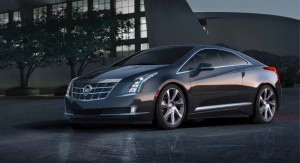
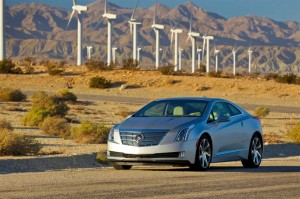
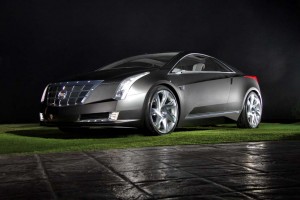
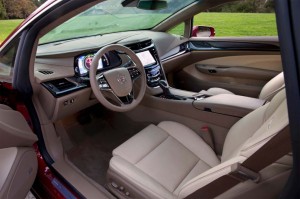
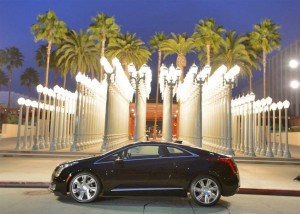
The wealthy buying expensive EVs and hybrids are doing so to pretend they are “green” and for status, mostly. The car makers have little choice however than to herd consumers towards EVs and hybrids as a means to charge consumers of normal high mileage gas and Diesel powered vehicles a CAFE fine as auto makers are simply not able to reach the absurd 54.5 mpg CAFE requirement that Obama and the EPA pulled from their orifice because the tech does not exist and the 54.5 mpg figure was never based on science or reality.
I should note that the 54.5 mpg number is a bit of a figment, Jorge. In reality, with credits and adjustments, the actual number is in the mid-40 mpg range. And it’s interesting to see that a number of popular vehicles are already nearing and even exceeding that figure. Even better, they’re not necessarily requiring downsizing, nor the loss of performance v comparable mainstream powertrains. The new Honda Accord Hybrid is a good example. While we could go back and forth on the validity of the specific figure one should also note that the auto industry came in agreeing with the 54.5 mpg number — which followed considerable negotiation downward from the 60 and higher numbers originally sought.
Paul E.
The CAFE 54.5 mpg figured is fixed and yes the credits will lower the actual mpg required on gas and Diesel powered vehicles some. THAT is precisely why the large car makers are pushing EVs and hybrids that make little sense, cost too much and will create a toxic dump problem tax payers will pay for.
Yes with their backs against the wall, aka being BLACK MAIL by Obama/EPA tactics, the industry RELUCTANTLY accepted the 54.5 mpg CAFE figure knowing full well they could never actually meet this figure and resigning to the fact that consumers would end up paying $5,000-$15,000 more per vehicle in cost for technology and fines because the 54.5 mpg figure is an absurd number pulled from the orifice of Obama and the EPA.
So yes there is no logic, science or ethical bases or means for defending the outlandish 54.5 mpg figure.